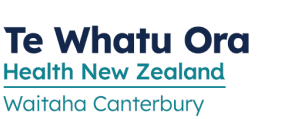What does it do?
Tixagevimab and cilgavimab is used to help prevent COVID-19 in immunosuppressed people who may not be fully protected by COVID-19 vaccines, or when vaccines are not recommended.
Before you start
- Tell your doctor if you have heart problems.
- Tell your doctor if you are pregnant, planning to become pregnant, or breastfeeding.
How is it given?
Tixagevimab and cilgavimab is given as two injections into a muscle by a health professional. You will be given both injections at the same appointment.
You will need to wait after having your injections to check you don’t have an allergic reaction.
Can you take other medicines?
Tell your pharmacist or doctor about all medicines or treatments that you may be taking, including vitamins, herbal products or recreational drugs.
What side effects might you notice?
Tixagevimab and cilgavimab is a new medicine. All the possible side effects are not known at this time.
| Side Effects | Recommended action |
|---|---|
|
Symptoms of allergy including: skin rash, itching, swelling, trouble breathing |
Tell your health professional immediately |
|
Symptoms of heart problems including: fluttering, pounding or pain in your chest, feeling your heart skips a beat, dizziness or fainting |
Tell your doctor immediately |
|
Swollen feet or legs, short of breath |
Tell your doctor |
|
Irritation or pain at injection site |
Tell your doctor if troublesome |
If you notice any other effects, discuss them with your doctor or pharmacist.
This leaflet contains important, but not all, information about this medicine.
Prepared by the MyMedicines Committee at Christchurch Hospital, Te Whatu Ora - Waitaha, New Zealand. March 2023
For more general information about this sheet and its contents, see: What does a My Medicines sheet cover?
Te Reo Māori
Te Reo Māori information sheets supported by Health Quality and Safety Commission New Zealand
Web links for this sheet in different formats
Click on buttons to copy web addresses for this leaflet:
If your browser does not automatically copy these links use its copy command instead.
About My Medicines
My Medicines Patient Information Leaflets (PILs) contain important, but not all, information about the medicines they describe.
For more information about the sheets, see: What does a My Medicines sheet cover?
My Medicines is developed by a team at Te Whatu Ora – Waitaha. Our team is made up of doctors, pharmacists, and a non-medical person to help us keep to plain language. We also discuss our information with specialist health professionals or groups when needed

